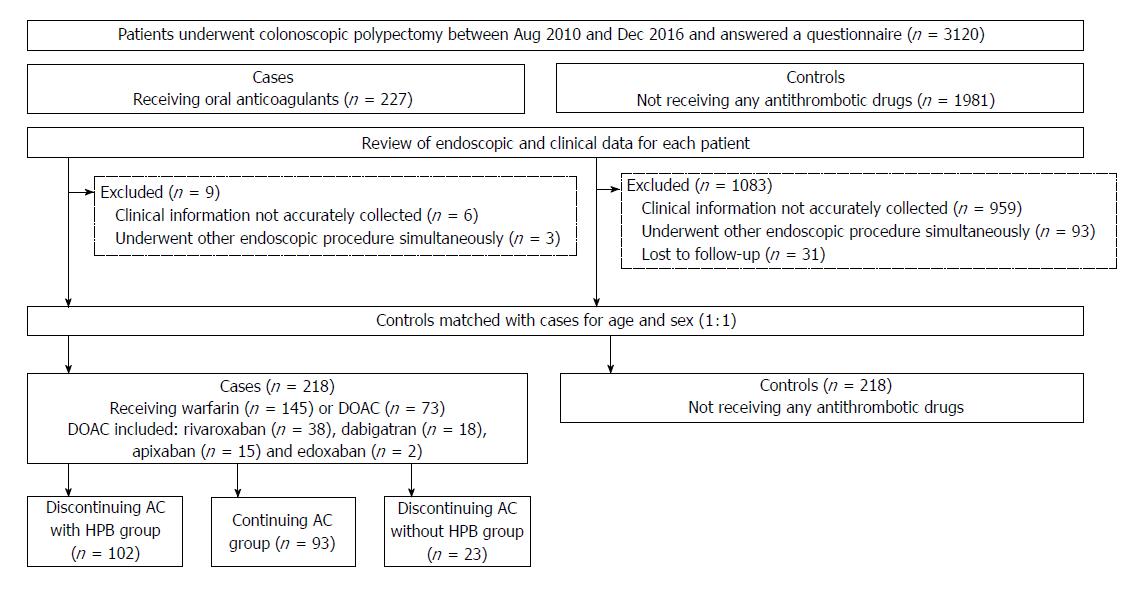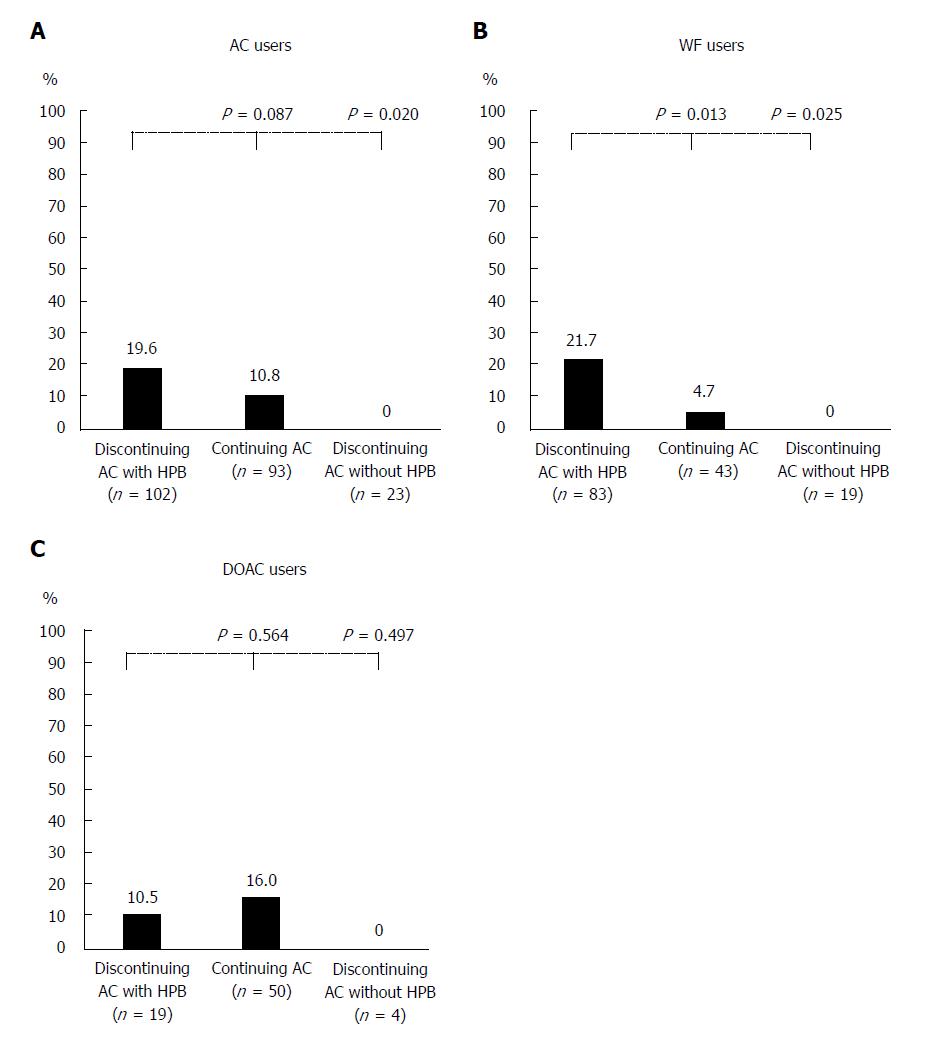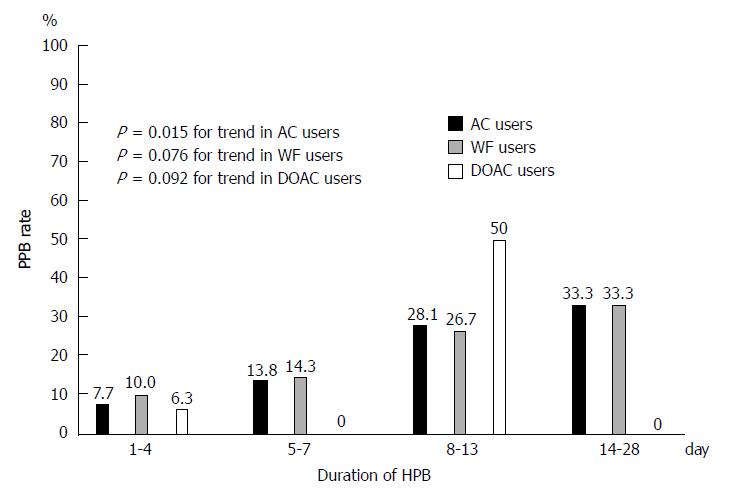Copyright
©The Author(s) 2018.
World J Gastroenterol. Apr 14, 2018; 24(14): 1540-1549
Published online Apr 14, 2018. doi: 10.3748/wjg.v24.i14.1540
Published online Apr 14, 2018. doi: 10.3748/wjg.v24.i14.1540
Figure 1 Patient selection and flow.
AC: Anticoagulants; DOAC: Direct oral anticoagulants; HPB: Heparin bridge.
Figure 2 Thirty-day post-polypectomy bleeding in controls (n = 218), anticoagulants users (n = 218) and subgroups of warfarin (n = 145) and direct oral anticoagulants users [n = 73: rivaroxaban (n = 38), dabigatran (n = 18), and apixaban (n = 15)].
P-values for comparison of each group with controls and for comparison of direct oral anticoagulants users with warfarin users. AC: Anticoagulants; DOAC: Direct oral anticoagulants.
Figure 3 Post-polypectomy bleeding according to the three main anticoagulants management strategies in anticoagulants (A), warfarin (B), and direct oral anticoagulants (C) users.
For the 218 patients, 102 patients (46.8%) in the discontinuing anticoagulants with heparin bridge group, 93 (42.7%) in the continuing anticoagulants group, and 23 (10.6%) in the discontinuing anticoagulants without heparin bridge group. AC: Anticoagulants; DOAC: Direct oral anticoagulants; HPB: Heparin bridge.
Figure 4 Association of post-polypectomy bleeding rate with duration of heparin bridge in anticoagulants, warfarin, and direct oral anticoagulants users.
AC: Anticoagulants; WF: Warfarin; DOAC: Direct oral anticoagulants; HPB: Heparin bridge; PPB: Post-polypectomy bleeding.
- Citation: Yanagisawa N, Nagata N, Watanabe K, Iida T, Hamada M, Kobayashi S, Shimbo T, Akiyama J, Uemura N. Post-polypectomy bleeding and thromboembolism risks associated with warfarin vs direct oral anticoagulants. World J Gastroenterol 2018; 24(14): 1540-1549
- URL: https://www.wjgnet.com/1007-9327/full/v24/i14/1540.htm
- DOI: https://dx.doi.org/10.3748/wjg.v24.i14.1540












